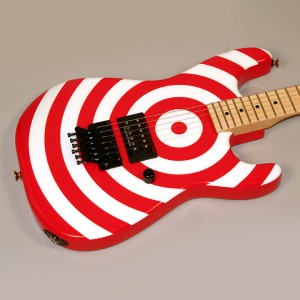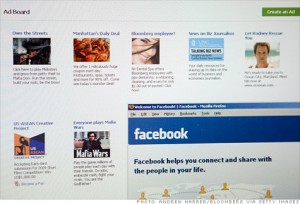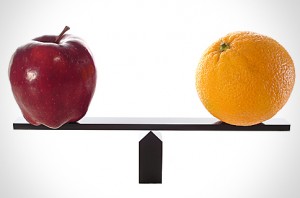Guide: Facebook Ads for Musicians
Facebook is a massive advertising platform which gives you as a musician the perfect opportunity to reach your potential fanbase. But if you’re a musician and not an internet marketer, it can be tough to get your head around the basics of Facebook advertising and marketing in general. For example, do you know what do CPM and CPC stand for? If no, then don’t worry, I’m going to cover this and much more in this Guide to Facebook Ads For Musicians. At the end of this post, you’ll know how to create a kick-ass Facebook Advertising campaign for your band and start getting some new fans right away. Sounds cool, right? So let’s do it!
Facebook Ads For Musicians: Advertising Basics
You can basically sum up Facebook Advertising in three steps. They are:
1. Identifying your goals.
2. Targeting your audience.
3. Creating your ads and setting the budget.
1. Identifying your goals.
 This is very important: before your start, you need to know, what you want to achieve with your campaign. Different goals require different approaches. For example, do you want to get more ‘likes’ on your Facebook page, more visitors to your website, or just raise your bands brand awareness? Figure this out before you start.
This is very important: before your start, you need to know, what you want to achieve with your campaign. Different goals require different approaches. For example, do you want to get more ‘likes’ on your Facebook page, more visitors to your website, or just raise your bands brand awareness? Figure this out before you start.
If you have more than one goal (which is pretty common) then I suggest you create an Ad Group for each one of these goals. That way you can compare the results easily later on.
Let’s say you want to get new ‘likes’ on your bands Facebook page. This is the most common goal for musicians. And the basic mistake people do, is linking their ad directly to their Wall. You NEVER want to send people to the Wall of your Facebook page. Always use a custom Landing Page for your band. This is where you want to send all the people who aren’t your fans already. There are many free tools for creating a custom Landing Page such as TabSite and PageModo
A good Landing Page has a call to action (Like Us, Become a fan, etc) and is like-gated. This means that if people like your page, they get access to some premium stuff. Combine these two and you get an awesome Landing Page. “Like us to download our new single for FREE!” Be creative and fun with your texts.
2. Target your audience.
 Facebook allows you to create insanely targeted ads. You can target 34-year-old-women from New York, who like Nirvana and beer.
Facebook allows you to create insanely targeted ads. You can target 34-year-old-women from New York, who like Nirvana and beer.
Facebook users give out so much information in their profiles that you have access to more demographic data than in any other advertising platform.
You can target people by:
- Location. By city, state, province or country.
- Demographics. By age range, gender, language or marital status (you can even target users based on their birthdays).
- Likes and interests. For example, hen I indicate on my profile that I like Metallica and if your band falls into the same category as Metallica, you can benefit from using that term in your ad campaign.
- Education and work. You can direct your campaign to students in a specific college or people with a particular level of education.
- Connections on Facebook. Includes connections to Groups, Pages, Events or Facebook apps.
You can use all this information to your benefit. If you’re promoting a gig, make sure to target the location where it’s taking place. People from that specific location are 98% more willing to come see your show than folks from two states over.
Tip: The narrower your target group, the more effective your campaign is. This helps you get cheaper clicks and saves you money. Yay!
3. Creating your ad and setting the budget.
So you have identified your goals and figured out your target audience, the next step is to put all this to practice and create the actual ads. Finally, huh?
The steps are:
- Design the ad
- Determine the target audience
- Select a name for the campaign
- Set pricing
- Submit the ad for review by Facebook.
Design the ad
 Facebook Ads consists of a title (25 characters), body(135 characters), a destination URL that is hyperlinked from the title and an image(110x80px).
Facebook Ads consists of a title (25 characters), body(135 characters), a destination URL that is hyperlinked from the title and an image(110x80px).
With the Title, you have two options:
1. Create our own title. The plus is that you can use strong call to action here and come up with different witty Titles. The downside is that Facebook Insights won’t show you exactly how many people liked your page after clicking on your ad.
2. Use your Facebook page title. So if your band’s Facebook page is called The Broken Jaw Empire, the title of your ad will be the same. You can’t change it, but you will be able to see exactly how many people liked your page after clicking on your ads. This is very valuable information indeed.
I suggest you go with option 2 in the beginning. Later on you can experiment with different titles.
Now with the body text I recommend you to be short, descriptive, value-adding (say that you’ll be giving out freebies or exclusive stuff to your fans) and be sure to use a call to action. “Come check it out”, “Download now”, “Click here” etc.
Finally we come to maybe the most important part of your Facebook Ads – the image. Research shows that ads with people, especially close ups of faces and eyes, tend to get a higher click through rate. So it will be very useful to give your ads a human touch! If you don’t want to use people, make sure your ad image is colourful to fight against banner-blindness. Try to stay away from Facebook’s shades of blue and use something that gives more contrast.
Select a name for the campaign
Campaign consists of all the ads that contain the same daily budget and schedule. There’s no limit on how many ads you can have in an ad group.
As I said in the beginning of this article, use different campaigns for different goals. You can also use different campaigns for different segments of your target audience. For example, create one campaign targeted to women and another targeted to men. These campaigns can use exactly the same ads, but I can bet you right now, the results will be different.
Ad pricing
Facebook allows you to choose between two different types of bids. Cost Per Click (CPC), which means that payment is only required when someone clicks the ad. And Cost Per Thousand Impressions (CPM), which means that payment is made each time your ad has been shown 1000 times.
If you’re just starting out I recommend using CPM, it’s easier and gives you more bang for the buck.
Daily budget
With daily budget you can set the maximum amount you want to spend on your ads in one day. Start out with a small number ($1-10). Consider the first couple of weeks of your campaign as research. You will find out where you can get the cheapest clicks and in the future forward your budget there.
Lifetime budget
Instead of setting your budget for a day, with Lifetime Budget you can set it for the entire lifetime of your campaign. This is useful when you’re dealing with a longer ad campaign.
Max bid
This is the maximum amount you’re willing to pay for 1 click or 1000 impressions. Facebook will recommend a max bid for you, but usually you can set your bid lower than that. But remember that you are bidding against other advertisers, so it pays to be a little competitive.
Submit your ad
After all this research and writing and finding the perfect picture for your ad, you’re now finally ready to submit it! Facebook will review your ad and if it meets the Advertising Guidelines, you’re all set up. The process usually doesn’t take more than a couple of hours.
Congratulations! You can now go and create an ad campaign that will perform better than 90% of all other Facebook ads. That’s because I gave you insights non internet marketing people just don’t know.
There’s just one more thing that can really help you boost your results. It’s a little thing called analyzing and testing.
During & after your campaign
 1. Make sure you regularly update your Ad texts. Just rearrange couple of words, combine with different ads and experiment with different types of approaches.
1. Make sure you regularly update your Ad texts. Just rearrange couple of words, combine with different ads and experiment with different types of approaches.
2. Also update your Ad Images. Try changing the background colour, using different images etc. We’ve seen results double from just changing the Ad Image.
3. Play around with your target audience. Narrow it down even more or try widening it. There’s this thing called Ad Saturation, which means that the same people will see your ads over and over again. If this number gets around 10 (people in your target group have seen your ad 10 times on average) the results drop. Keep it fresh and keep it new!
That’s it! I hope I didn’t overwhelm you with information and gave you insights most people don’t know. Put these tactics into use and I can promise your results will improve.
If you have any questions, don’t be shy and ask me.
Please, share this post:
